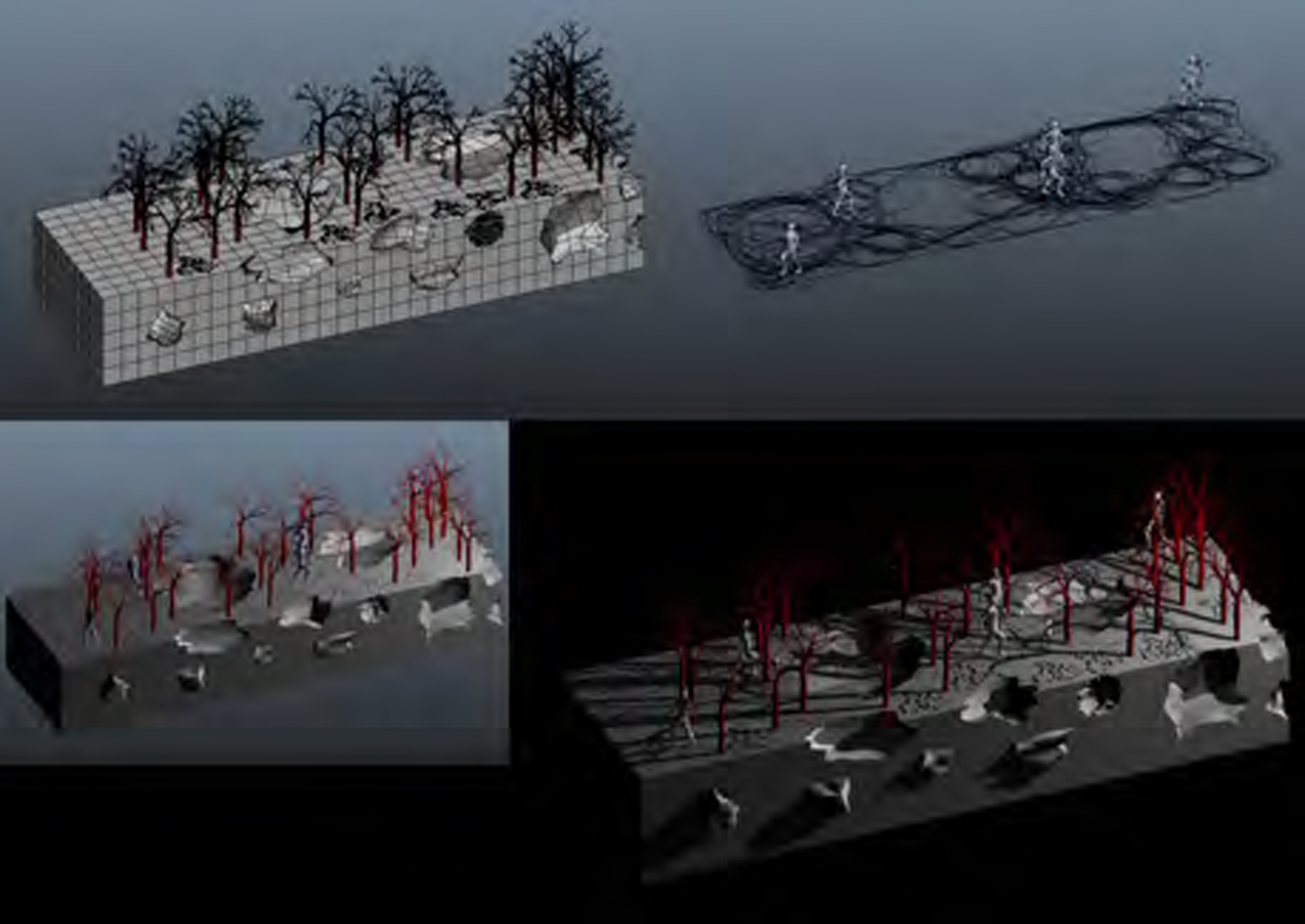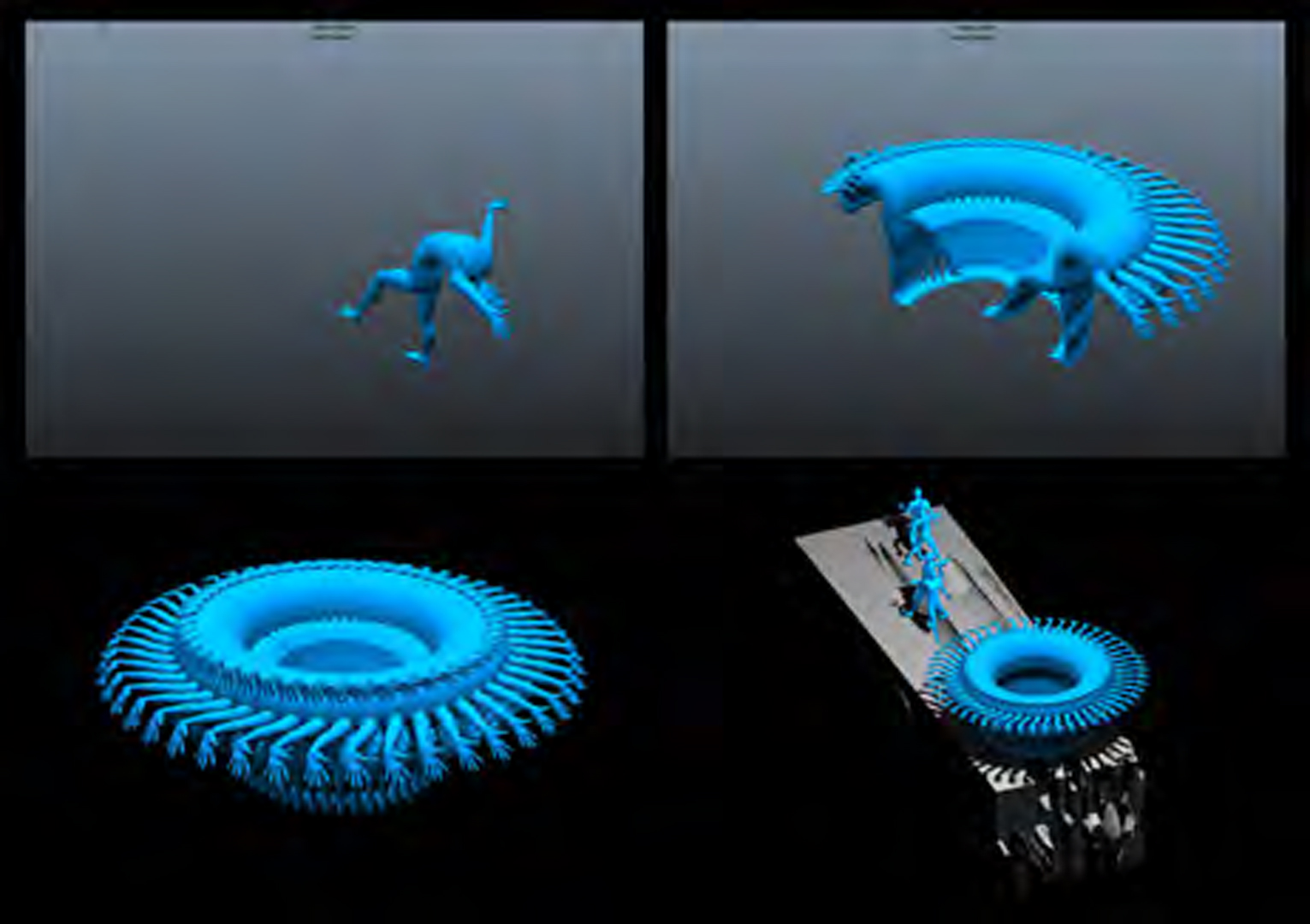“Impossible Choreographies: The Database as Creative Tool” presented by Bennett
Symposium:
Session Title:
- Dance
Presentation Title:
- Impossible Choreographies: The Database as Creative Tool
Presenter(s):
Venue(s):
Abstract:
This artist talk is a reflection on my own art practice as a direct engagement with high-end industrial 3D animation software, and discusses the emergence of the database as a creative methodology, and a key organizing principle in the generation of an ongoing series of 3D digital animated artworks. Through explication and demonstration of creative process I aim to elucidate the intricate relationship between technology, process and artistic intent, framing this within relevant emergent critical frameworks around digital creative practice. The aim is to recognize some of the inherent qualities of 3D digital production, and the mapping of the operations of the ‘database’ as a pliable creative tool.
Working directly into high-end 3D modeling and animation software, and taking the actions of a generic male figure as a point of departure, my animations are created in a modular fashion, building up units of performed movements, loops and cycles (both animated and motion-captured), creating a sometimes complex movement vocabulary.
This recalls Lev Manovich’s notions of the database and the loop as engines of (non-linear) narrative in digital media work, in particular his principles of modularity, automation and variability as intrinsic to new media objects.[1] In working with complex software tools I also acknowledge in the fabrication process what Rachael Kearney has termed the ‘synthetic imagination’[2], and Malcolm Le Grice’s conception of submerged authorship in the interaction with the ‘intelligent machine’ – the creative act as a collaboration with the embodied intellect of the software itself.[3]
Drawing on and remediating a range of sources including the photographic studies of Eadweard J. Muybridge, the choreography of Busby Berkeley, nineteenth century optical toys, and the contemporary digital video game, these works present figures which occupy a space between the animate and the inanimate, between automata (devices that move by themselves) and simulacra (devices that simulate other things). Manovich models the creation of a digital media work as the ‘construction of an interface to a database…the interface [providing] access to an underlying database.’[4] So rather than fashioning a unique work of art ‘within a particular medium’ where interface and data are one, in ‘new media, the content of the work and the interface are separated. It is therefore possible to create different interfaces to the same material.’[5] Elements can be composed and recomposed, duplicated, altered, retrieved and deleted non-destructively, representing a shift from creation to selection.
What I recognize in this dynamic between ‘creative’ user and complex software tool, in my own incremental process of engagement and expertise with 3D animation software are alignments between form and content, where my capabilities with, and employment of, generic and pre-set functions (loops, database structures of storage and retrieval), and intrinsic formal characteristics (Manovich’s ‘Modularity’, ‘Automation’ and ‘Variability’) form a feedback loop with aesthetic and thematic concerns.
References
- Lev Manovich, The Language of New Media (Cambridge, Mass: MIT Press).
- Rachel Kearney, Animated Worlds and the Romantic Imagination in Animated Worlds, Ed. Suzanne Buchan (Eastleigh: John Libbey Publishing, 2006), 7.
- Malcolm LeGrice, Experimental Cinema in the Digital Age (London: British Film Institute), 240.
- Lev Manovich, The Language of New Media, 218.
- Lev Manovich, The Language of New Media, 218.






